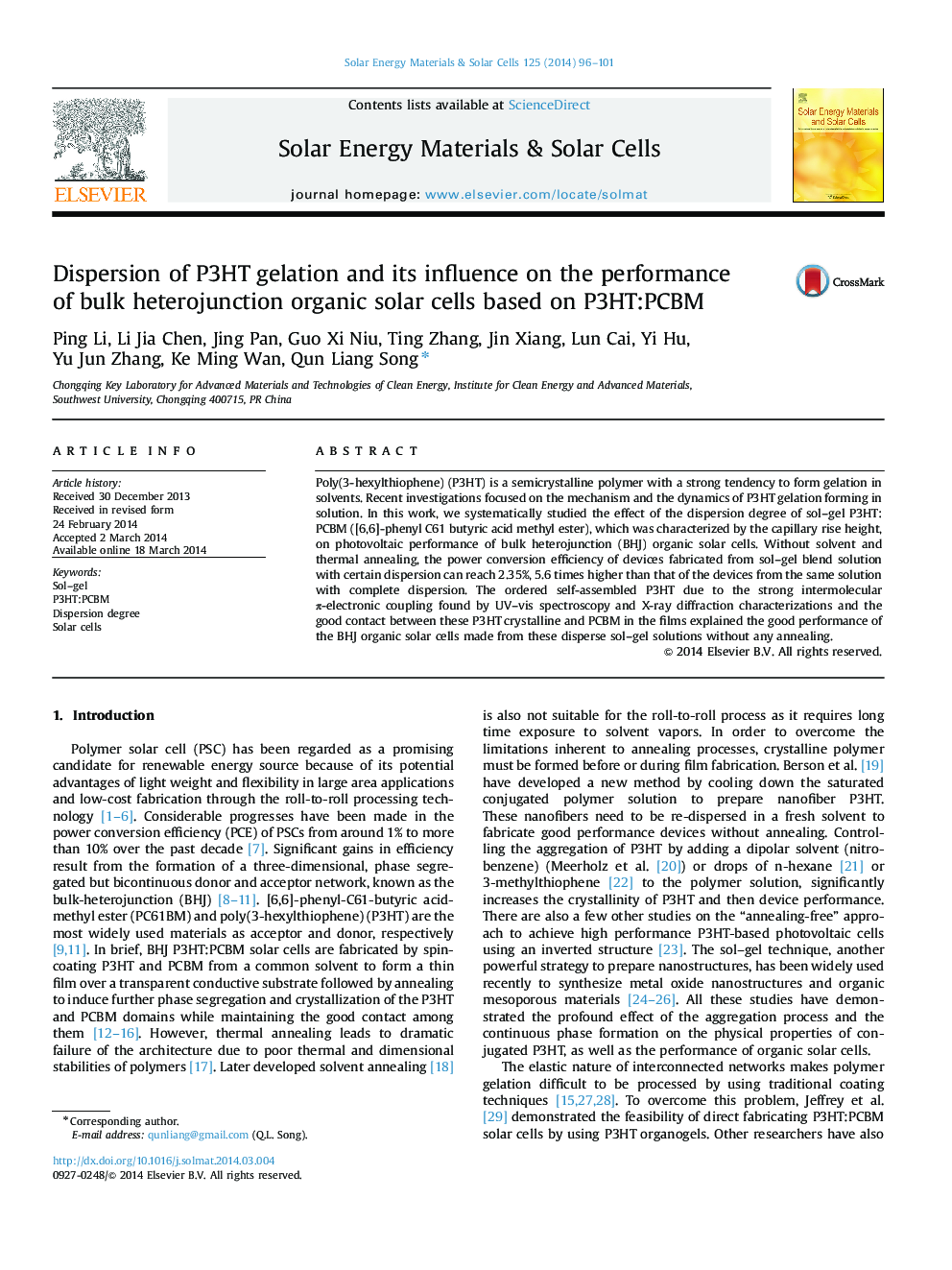| Article ID | Journal | Published Year | Pages | File Type |
|---|---|---|---|---|
| 78088 | Solar Energy Materials and Solar Cells | 2014 | 6 Pages |
•The device prepared from the optimized dispersion of P3HT:PCBM aggregation shows a power conversion efficiency of 2.35% without any annealing.•Capillary rise height is used to measure the dispersion degree from a same sol–gel P3HT:PCBM solution.•The effects of the dispersion degree on the performance of BHJ organic solar cells are studied.
Poly(3-hexylthiophene) (P3HT) is a semicrystalline polymer with a strong tendency to form gelation in solvents. Recent investigations focused on the mechanism and the dynamics of P3HT gelation forming in solution. In this work, we systematically studied the effect of the dispersion degree of sol–gel P3HT:PCBM ([6,6]-phenyl C61 butyric acid methyl ester), which was characterized by the capillary rise height, on photovoltaic performance of bulk heterojunction (BHJ) organic solar cells. Without solvent and thermal annealing, the power conversion efficiency of devices fabricated from sol–gel blend solution with certain dispersion can reach 2.35%, 5.6 times higher than that of the devices from the same solution with complete dispersion. The ordered self-assembled P3HT due to the strong intermolecular π-electronic coupling found by UV–vis spectroscopy and X-ray diffraction characterizations and the good contact between these P3HT crystalline and PCBM in the films explained the good performance of the BHJ organic solar cells made from these disperse sol–gel solutions without any annealing.
Graphical abstractP3HT:PCBM solution with different capillary rise heights are obtained by simply shaking the same aggregated solution. The best performance without any annealing is achieved for the device fabricated from solution with 3.2 cm capillary rise height.Figure optionsDownload full-size imageDownload as PowerPoint slide
